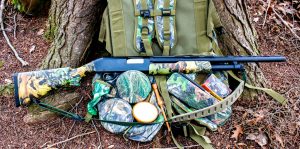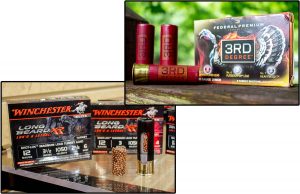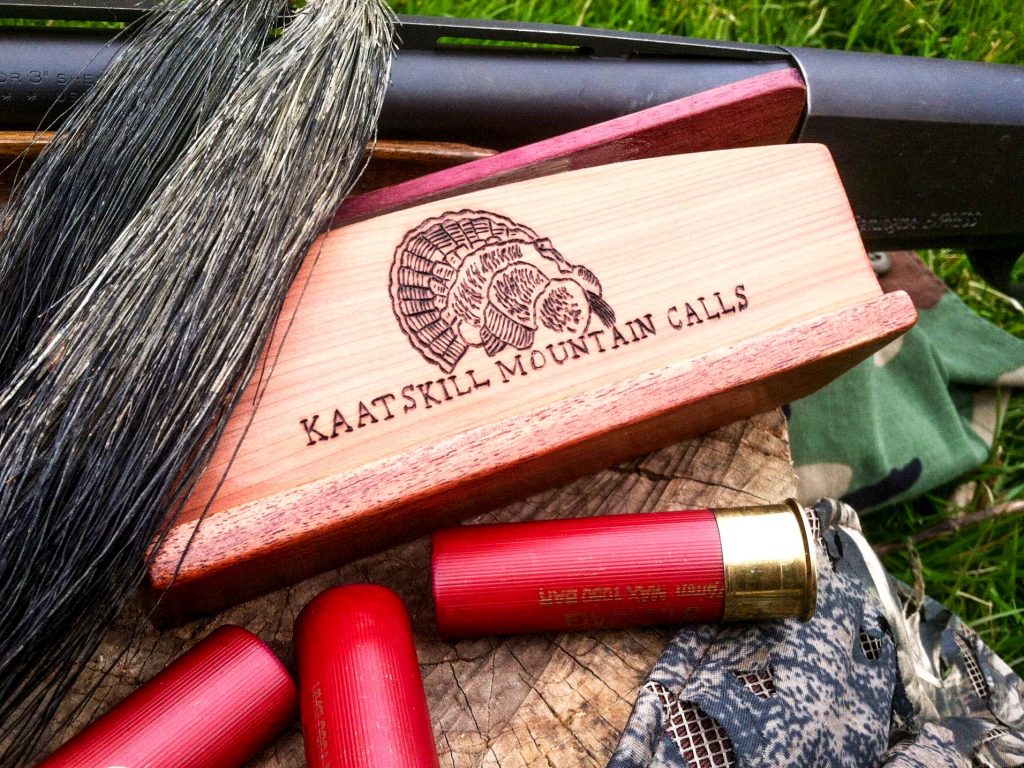
Five Must-Haves for Turkey Season
By Phil Massaro
This article is pre-empted with a warning: Turkey hunting can be highly addictive.
There, you’ve been warned.
If you’re still with me, you’ll have many great memories over the years, time spent both alone and with good friends, outsmarting birds and being outsmarted, but it’s all good stuff. Though there’s no way to buy hunting skills, good gear will most definitely equal more birds, and since I’m the kind of hunter who likes all the odds in my favor I can get, let’s take a look at five must-haves for your turkey hunt.
- A Good Turkey Shotgun — Sounds a little silly, as one might assume that a shotgun is a shotgun, but when it comes to turkeys, that simply isn’t the case. I’ve seen a tom take a full charge of 3-inch magnum 12-gauge and run off as if he’d been boinked by a slingshot. I’ve also seen them take a (properly placed) lighter load from a 20-gauge and crumple like a piece of paper. The simple fact of the matter is that you need a shotgun that you shoot well and will deliver the pattern of shot that will humanely and quickly kill your turkey.
I like a pump-shotgun for its simplicity, though I’ve used auto-loaders that worked equally well. I do prefer a 12-gauge shotgun, as I feel it delivers the best blend of shot volume and manageable recoil. I have friends who swear by their 10-gauges, and others who insist that a 20-gauge is more than enough. The 12-gauge lies right in the middle.
No matter what shotgun you decide on, interchangeable chokes will be a blessing. There are Full, Extra-Full and Super-Full chokes which will concentrate your shot pattern to best kill a turkey at extended distances. It may require a bit of experimentation to find the proper choke for your gun, but once you’ve got that blend of shotgun and choke, you’ve got a partner for life.
- Modern Turkey Shotshells — This is one area where technology has been a definite gamechanger. My dad and grandpa both looked at copper-plated shot as a revolutionary idea when turkeys were first open to hunting (many, many years ago), but when compared with modern shot design, those shells now seems archaic.The recent developments in turkey shotshells are perhaps the most important in the last decade. We have resin-locked shot columns, we have multiple shot shapes and sizes blended within the same shotshell and we have shot made of lead, copper and other dense metals that offer unprecedented performance. Your choice of turkey hunting shotshell is one area that will require some experimentation—trying various loads with various chokes to see how they pattern on paper—but I can promise you that you’ll be able to kill cleanly at ranges previously considered too far to shoot with today’s rounds.
- Turkey Calls — There are many ways to replicate the vocabulary of a hen turkey, and I’d suggest you carry more than one call of this type with you when you head afield. I’ve always had a preference for the friction calls—box calls and slate calls—but they do require two hands to operate (and that movement’s easy to spot by the eagle-eyed turkey), and their functionality can be compromised by wet weather. Mouth calls, of which there are many, work very well, if you can get used to the feel of them; they always tickled the roof of my mouth, but I must say that they sound great. You’ll have to try different models and take advice from experienced turkey hunters to find the call that works for you.
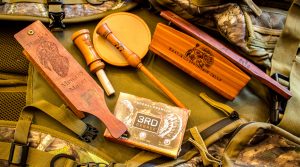
A variety of turkey calls is important, in order to have a backup in the field, as well as to create a variety of sounds.
Depending on local game laws, you may find an electronic call that suits your needs. There are other mechanical calls that will help you, too, like an owl hooter or crow call to help locate turkeys or a gobble call to lure in jealous toms. Dig into the lot of them and find a quiet place to practice!
- Camouflage Clothing — Turkeys have incredible eyesight, there’s no arguing that point. Additionally, they are hunted hard every season and equate the presence of man with danger. The better you can be camouflaged (and the least amount of movement you can make) the better your chances of success.
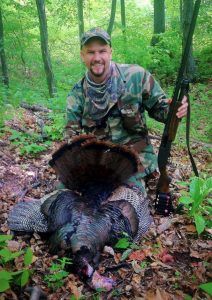
The author has used surplus military camo for many years, but there are many good patterns available to the turkey hunter.
Modern camo patterns are amazing, and there are enough choices to blend you into whatever habitat you’re hunting. If your budget is tight, any camouflage is better than no camouflage, and I’ve killed a boatload of turkeys wearing surplus army clothes. Keep any shiny objects like a wristwatch covered up, and I always wear a light pair of camo gloves and a face mask—seriously, turkeys will spook at the slightest little peek of human. I also swear by one more piece of clothing: my turkey vest. It has plenty of convenient pockets to hold my calls, my shells, my phone and all the other accoutrements I drag along on a turkey hunt, a bag to carry a turkey and, best of all, a fold-down seat to keep your tush dry and comfy when sitting for a big gobbler.
- Boots — I’m a stickler for good hunting footwear, as it has been the one item that has failed me most throughout my years in the field. Turkey season represents a multitude of challenges for footwear, as the heavy spring dew of the pre-dawn hours will work its way to hot and muggy conditions as midday approaches. You’ll be caught in the rain, wading through tall grass, hiking in deep woods, crossing streams and swamps, and possibly be exposed to snakes as the weather gets warmer. In addition to keeping you protected in all those scenarios, your boots will also need to be quiet, yet comfortable enough to chase those birds over hill and dale. I prefer my turkey boots to come up over the ankle, at least seven to eight inches, and 10 inches can sometimes be better. They don’t need to be camouflage, but it won’t hurt either.
- Bonus advice!— I hate bugs, and will take any steps to keep them away. Take along bug spray and a bug head net. The mosquitoes and black flies can get downright terrible during turkey season in many parts of the country, and a head net can turn an intolerable situation into an opportunity at a trophy turkey. Bug spray—especially in those areas where ticks are prevalent—will keep you happy both long and short term.
-*-*-*-*-*
About the Author
Phil Massaro’s expertise both with firearm and sentence has quickly given him a hard-earned reputation in the outdoor industry. Hunting in his native New York state since the age of 14, Massaro now travels the world, pursuing everything from the whitetails and black bears of New England to red stag in Scotland, Cape buffalo in Zambia and Mozambique, elephant in Zimbabwe and water buffalo in Australia. His work appears regularly in the NRA’s American Hunter and Shooting Illustrated, Gun Digest, Guns & Ammo and Dallas Safari Club’s Game Trails Magazine, often accompanied by the photography of his wife, Suzie, also an avid hunter. When not writing or hunting, he works as a professional land surveyor alongside his father, and he also manages to squeeze in time at the reloading bench of Massaro Ballistic Laboratories, the custom ammunition company he founded. No, he doesn’t sleep.
